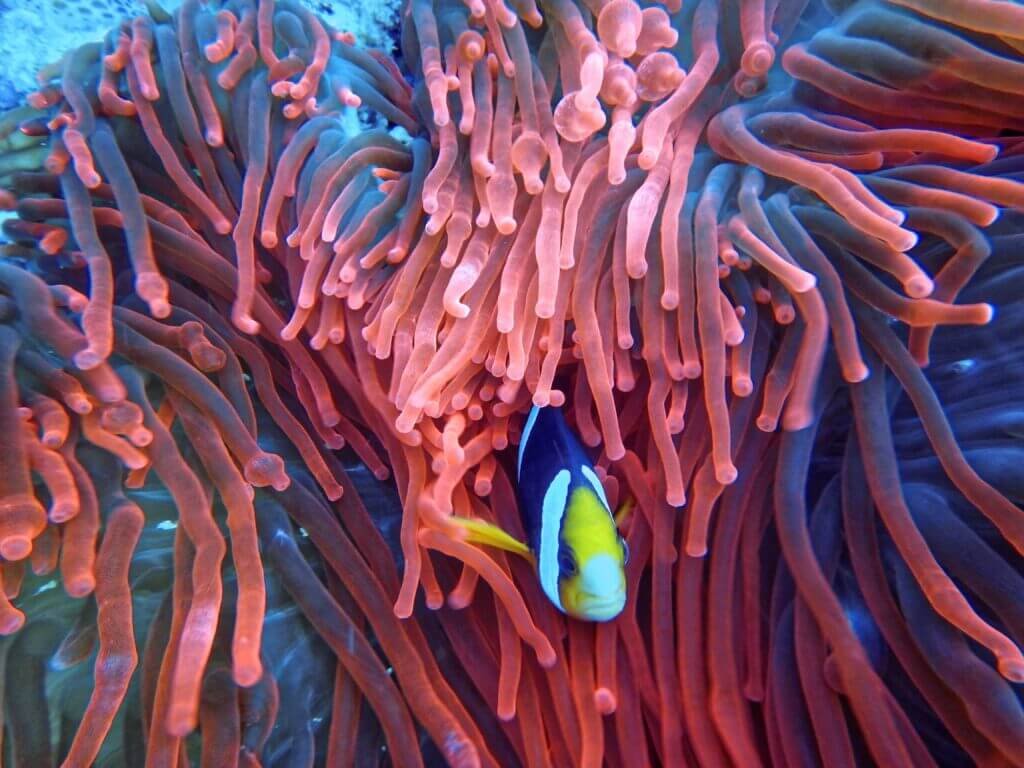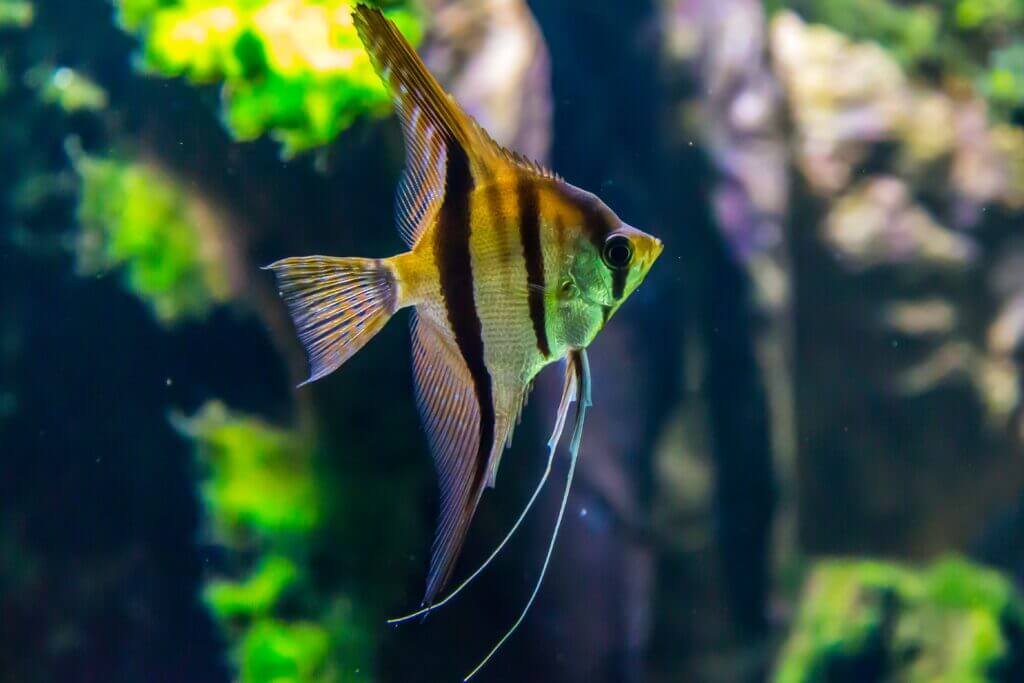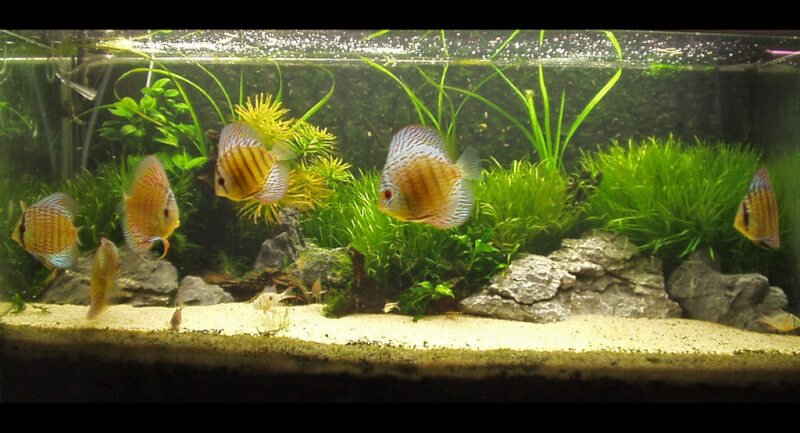If you’ve ever dreamed of having your own little underwater oasis right in your living room, setting up a home aquarium is the perfect way to bring that dream to life. Creating a vibrant and thriving aquatic ecosystem may seem daunting at first, but with a few simple steps, you’ll be well on your way to becoming a proud fish owner. In this article, we’ll walk you through the process of setting up a home aquarium, covering everything from selecting the right tank size and equipment to choosing the perfect fish species for your underwater haven. So get ready to dive into the fascinating world of aquariums and start transforming your home into an enchanting aquatic paradise!

Choosing the Right Aquarium
Determining Size
When it comes to choosing the right aquarium for your home, size matters. The size of the aquarium not only affects the overall aesthetics but also plays a crucial role in the well-being of your fish. It is recommended to opt for the largest tank that fits your space and budget. A larger tank provides a more stable environment for your fish, allowing for better water quality and more room to swim.
Selecting the Type
There are various types of aquariums available in the market, each with its own set of advantages and considerations. The most common types include freshwater, saltwater, and reef aquariums. Freshwater aquariums are generally more suitable for beginners as they require less maintenance and are more forgiving. Saltwater aquariums, on the other hand, offer a greater variety of fish species and stunning visual appeal. Reef aquariums are specifically designed for keeping corals and other invertebrates, requiring advanced knowledge and expertise.
Considering Custom Options
In addition to determining the size and type, considering custom options can enhance the overall experience of having an aquarium. These options include rimless tanks, custom shapes, and built-in filtration systems. Rimless tanks provide an unobstructed view of the underwater world, while custom-shaped tanks allow for creative design possibilities. Built-in filtration systems can offer convenience and improve the aesthetics of your setup. Assessing your preferences and budget will help you choose the right custom options for your aquarium.
Selecting the Ideal Location
Avoiding Direct Sunlight
When selecting the ideal location for your aquarium, it is crucial to avoid placing it in direct sunlight. Sunlight can cause excessive algae growth and increase the temperature of the water, leading to unfavorable conditions for your fish. Choose a spot away from windows or consider using blinds or curtains to block out direct sunlight.
Considering Accessibility
Accessibility is another key factor to consider when determining the location of your aquarium. Ensure that the chosen spot allows for easy access to perform maintenance tasks such as water changes, filter cleaning, and feeding. It is also important to consider the weight of the aquarium when selecting the location, as large tanks can place a significant load on the floor.
Ensuring Stability
Stability is essential for maintaining a healthy and thriving aquarium. Choose a location with a stable and level surface that can adequately support the weight of the tank. Uneven surfaces can lead to stress on the glass or acrylic, potentially causing leaks or cracks. Remember to take into account the weight of the tank, water, gravel, decorations, and equipment when assessing stability.
Preparing the Tank
Cleaning the Tank
Before setting up your aquarium, it is crucial to clean the tank properly. Use warm water and a non-toxic aquarium-safe cleaner to remove any dirt, dust, or residues from the tank’s surface. Avoid using household cleaning agents, as they may contain chemicals harmful to fish. Rinse the tank thoroughly to ensure all cleaning products are completely removed.
Installing a Background
Installing a background can add depth and visual appeal to your aquarium. Options include solid colors, natural landscapes, or vibrant designs. When selecting a background, ensure that it is suitable for use in an aquarium environment and does not contain any toxic substances. Properly affix the background to the back panel of the tank using aquarium-safe adhesive.
Adding Gravel or Substrate
The addition of gravel or substrate provides a natural environment for your fish and helps establish beneficial bacteria colonies. Choose a substrate that suits the type of aquarium you are setting up, such as fine gravel for freshwater tanks or reef-specific sand for saltwater setups. Rinse the gravel or substrate thoroughly to remove any dust or debris before adding it to the tank.
Setting Up the Filtration System
Choosing the Right Filter
A filtration system is essential for maintaining a healthy aquarium environment. When selecting a filter, consider the size of your tank, the type of fish you plan to keep, and the filter’s efficiency. There are three main types of filters: mechanical, biological, and chemical. Mechanical filters remove debris and particles, biological filters provide a surface for beneficial bacteria to grow, and chemical filters remove impurities through activated carbon or other media.
Installing the Filtration System
Once you have chosen the right filter, follow the manufacturer’s instructions to install it properly. Place the filter in the designated area of the tank, ensuring it is securely attached and positioned to maximize water flow. Connect the necessary tubing and ensure all connections are tight and leak-free.
Priming the Filter
After installing the filtration system, it is crucial to prime the filter to ensure proper functioning. Priming involves filling the filter with water to remove any air trapped in the system. Consult the filter’s manual for specific priming instructions, as the process may vary depending on the type of filter. Once primed, plug in the filter and monitor it to ensure it is operating smoothly.

Understanding Water Parameters
Understanding pH Levels
pH levels play a vital role in the health of your fish and the overall stability of the aquarium environment. Different fish species have specific pH requirements, and it is essential to maintain the appropriate pH level for the specific fish you are keeping. Test your water regularly using a reliable pH testing kit and make the necessary adjustments, if needed, by using appropriate pH regulators.
Monitoring Temperature
Maintaining a stable water temperature is crucial for the well-being of your fish. Most tropical fish prefer a temperature range between 75-80°F (24-27°C). Use a quality aquarium thermometer to monitor the temperature regularly and adjust the heater if necessary. Avoid placing the tank near heat sources or areas with extreme temperature fluctuations.
Checking Water Hardness
Water hardness refers to the concentration of minerals, such as calcium and magnesium, in the water. Some fish species are sensitive to water hardness and require specific levels to thrive. Test the water hardness using a water testing kit and make necessary adjustments by using additives designed to increase or decrease hardness.
Cycling the Tank
Understanding the Nitrogen Cycle
Cycling the tank is a crucial step in establishing a healthy aquarium ecosystem. The nitrogen cycle is a natural process that converts harmful ammonia from fish waste into less toxic substances. Beneficial bacteria play a key role in this process. Cycling typically takes 4-6 weeks and involves monitoring water parameters and adding a source of ammonia to feed the bacteria.
Adding Ammonia
During the cycling process, ammonia must be added to the tank to provide a food source for the beneficial bacteria. It is important to choose a pure source of ammonia without any additives or perfumes. Follow the instructions provided with the ammonia product to determine the appropriate amount to add. Regularly test the water parameters to ensure that the ammonia levels are in the appropriate range.
Testing Water Parameters
Regularly test the water parameters throughout the cycling process to monitor the progress of the nitrogen cycle. This includes testing for ammonia, nitrite, and nitrate levels. Ammonia and nitrite levels should be monitored closely and should eventually drop to zero, indicating that the beneficial bacteria are established. Nitrate levels should be kept at a relatively low level through regular water changes.
Adding Decorations and Plants
Choosing Aquatic Decorations
Aquatic decorations not only enhance the visual appeal of your aquarium but also provide hiding spots and territories for your fish. When selecting decorations, consider the needs and preferences of your fish species. Avoid sharp or rough decorations that can harm your fish. Choose ornaments that are made specifically for aquariums and do not leach harmful substances into the water.
Selecting and Placing Plants
Live plants offer numerous benefits to your aquarium, including oxygen production, water filtration, and natural habitat for fish. Research the plant species that are compatible with your tank and select plants based on their lighting and nutrient requirements. Arrange the plants in a visually appealing manner, considering factors such as height, color, and texture.
Creating Hiding Spots
Fish, especially territorial species, require hiding spots to feel secure and reduce stress. Use rocks, caves, and driftwood to create hiding spots and territorial boundaries within the aquarium. Ensure that the decorations are securely positioned and do not pose any risk of falling or causing harm to the fish.
Selecting and Introducing Fish
Researching Compatible Species
When selecting fish for your aquarium, it is important to research and choose species that are compatible with each other in terms of size, temperament, and water parameter requirements. Additionally, consider the specific needs of each species, such as diet and swimming habits, to ensure they can thrive in the chosen environment. Avoid overcrowding, as it can lead to stress, aggression, and poor water quality.
Choosing Healthy Fish
When purchasing fish, it is crucial to choose healthy and vibrant individuals. Look for active fish with clear eyes, intact fins, and a healthy appetite. Avoid selecting fish that appear lethargic, have visible signs of disease, or are housed with sick tankmates. Purchasing fish from reputable sources can greatly increase the chances of obtaining healthy specimens.
Acclimating Fish to the Tank
Proper acclimation to the aquarium environment is essential for reducing stress and ensuring a smooth transition for your new fish. Before adding the fish to the tank, float the bag containing the fish in the aquarium for about 15-20 minutes. This allows the water temperature to equalize. Next, gradually introduce small amounts of tank water into the bag over a period of time to help the fish adjust to the new water conditions. Finally, use a net to gently transfer the fish into the tank, avoiding any sudden movements.
Maintaining Water Quality
Regular Water Changes
Maintaining good water quality is crucial for the health and well-being of your fish. Regular water changes help remove accumulated toxins and ensure optimal water parameters. The frequency and extent of water changes depend on factors such as the size of the tank, number of fish, and filtration system. Generally, a 10-20% water change every 1-2 weeks is recommended.
Testing Water Parameters
Regularly testing the water parameters is essential for identifying any imbalances or potential issues in the aquarium. Test kits are available for measuring parameters such as ammonia, nitrite, nitrate, pH, and water hardness. Regular monitoring allows you to take corrective actions promptly and maintain a stable and healthy environment for your fish.
Cleaning the Tank
Routine maintenance includes cleaning the tank and removing any debris, uneaten food, or waste that has accumulated. Use an aquarium-safe siphon or gravel vacuum to clean the substrate and remove any detritus from the bottom of the tank. Avoid using soap or cleaning agents that can be harmful to the fish. Clean the glass or acrylic surfaces using a soft sponge or scraper specifically designed for aquarium use.
Feeding and Caring for Fish
Providing a Balanced Diet
Proper nutrition is essential for the health and vitality of your fish. Research the specific dietary requirements of your fish species and provide a balanced diet consisting of high-quality pellets, flakes, frozen or live food. Avoid overfeeding, as it can lead to poor water quality and health issues. Feed your fish small, frequent meals instead of one large feeding.
Monitoring Fish Behavior
Regularly observe the behavior of your fish to ensure they are healthy and thriving. Look for signs of stress, such as fin clamping, erratic swimming, or loss of appetite. Monitor interactions between tankmates to ensure there is no aggression or bullying. Any significant changes in behavior should be addressed promptly to prevent potential health issues.
Addressing Fish Health Issues
Fish health issues can arise despite your best efforts. If you notice any signs of illness, such as lethargy, loss of appetite, abnormal swimming patterns, or visible lesions, take immediate action. Quarantine affected fish to prevent the spread of disease and consult a reputable aquarium professional or veterinarian for diagnosis and treatment options. Prompt intervention can greatly increase the chances of a successful recovery.
Setting up a home aquarium can be an enjoyable and rewarding experience. By carefully selecting the right aquarium, considering its location, properly preparing the tank, setting up a suitable filtration system, understanding water parameters, cycling the tank, adding decorations and plants, selecting and introducing fish, maintaining water quality, and providing proper care, you can create a thriving underwater ecosystem that brings beauty and joy to your home. Remember to regularly observe and interact with your fish to establish a bond and ensure their well-being. Enjoy the wonderful world of aquarium keeping!


